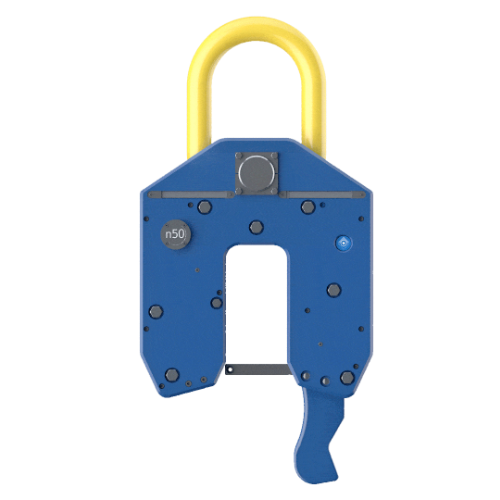
In today’s industrial landscape, efficiency and safety are paramount in lifting operations across various sectors. Automatic hooks have emerged as a transformative technology, revolutionizing how materials are lifted and handled. Let’s delve into the world of automatic hooks, exploring their features, advantages, applications, and the future of lifting technology.
Understanding Automatic Hooks
Automatic hooks are advanced lifting devices equipped with electronic features such as load sensors, automatic locking mechanisms, and remote control operation. Unlike traditional hooks, which rely on manual intervention, automatic hooks are designed to streamline lifting processes through automation and smart technology. These hooks are engineered to enhance safety, efficiency, and ergonomics in lifting operations.
Advantages of Using Automatic Hooks
Increased Safety: Automatic hooks significantly reduce the risk of accidents by eliminating the need for manual hooking and unhooking of loads. Features like automatic locking ensure that loads are securely attached during lifting, preventing accidental drops or slips. Remote control operation allows operators to manage lifting operations from a safe distance, especially in hazardous environments.
Enhanced Efficiency: One of the standout features of automatic hooks is their ability to improve operational efficiency. By automating the release and attachment of loads, these hooks reduce cycle times and labor costs associated with manual handling. Operators can quickly load and unload materials without the physical strain of traditional lifting methods, thereby boosting overall productivity.
Versatility and Adaptability: Automatic hooks are highly adaptable to various lifting scenarios. Whether it’s lifting in confined spaces, navigating uneven terrain, or handling oversized loads, these hooks excel where traditional methods fall short. They can adjust to different load sizes, shapes, and weights, making them versatile tools across industries like manufacturing, construction, and logistics.
Applications of Automatic Hooks
Industrial Applications: In industries such as manufacturing and construction, automatic hooks are integral to streamlining operations. They ensure efficient material handling, reduce downtime, and enhance worker safety in challenging environments.
Specialized Uses: Automatic hooks are also favored in specialized applications, such as offshore rigging and aerospace. Their ability to handle oversized lifting points and unconventional loads makes them indispensable in niche sectors where precision and safety are paramount.
The Future of Lifting Technology: Industry 4.0 Integration
As industries move towards Industry 4.0, automatic hooks play a pivotal role in integrating with smart technologies. These hooks can exchange data with other devices and systems, enabling predictive maintenance, real-time monitoring of loads, and seamless coordination within the production or logistics chain. This integration not only enhances automation but also drives efficiency and productivity gains.
Choosing the Right Automatic Hook
When selecting automatic hooks, consider factors such as load capacity, environmental conditions, and integration capabilities with existing systems. Compare different models based on their features and suitability for specific operational needs to maximize ROI and safety compliance.
Takeaway
Automatic hooks represent a significant advancement in lifting technology, offering unparalleled safety, efficiency, and adaptability across diverse industries. As technology continues to evolve, these hooks will continue to play a crucial role in transforming lifting operations, driving towards safer, more efficient workplaces.



